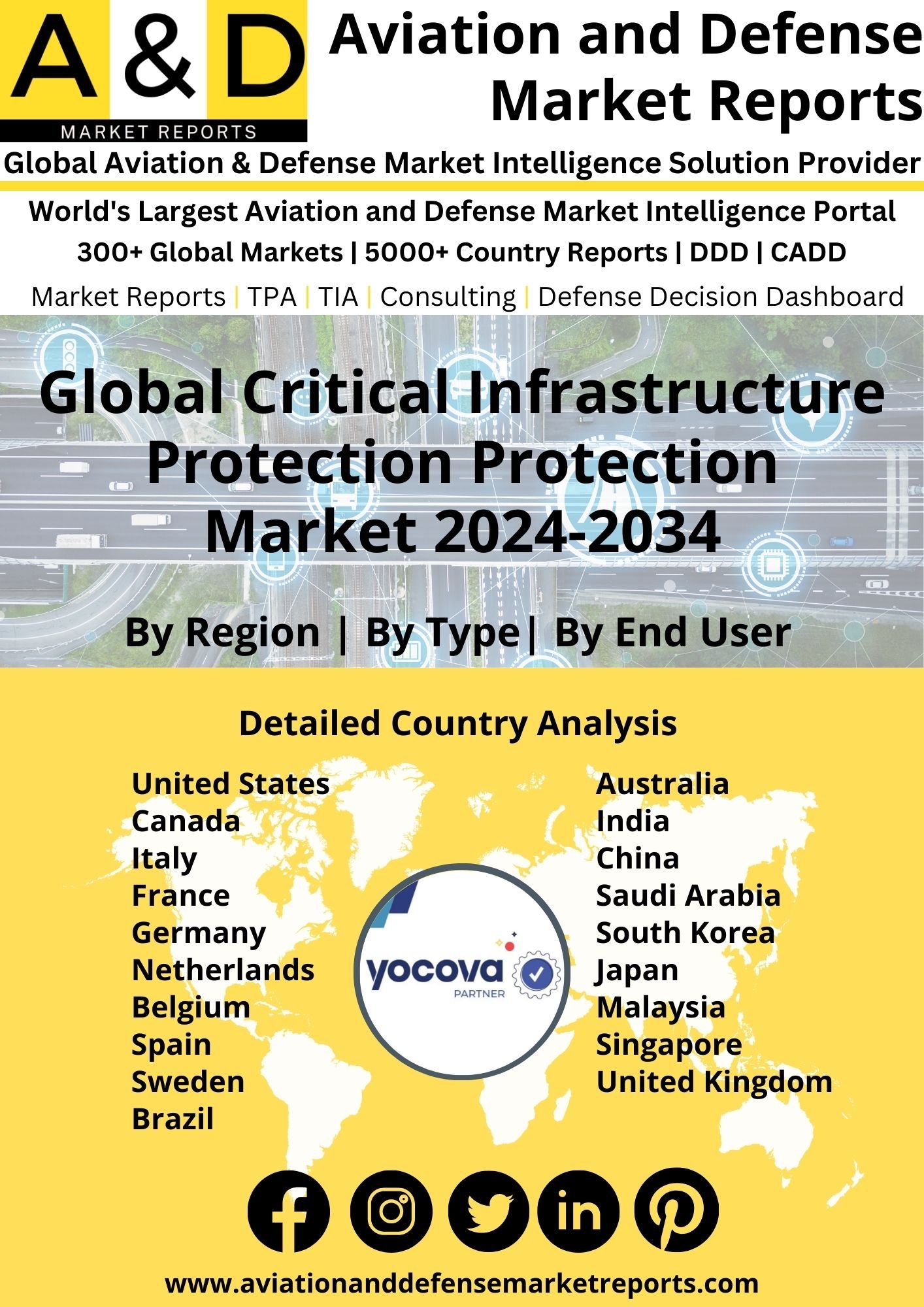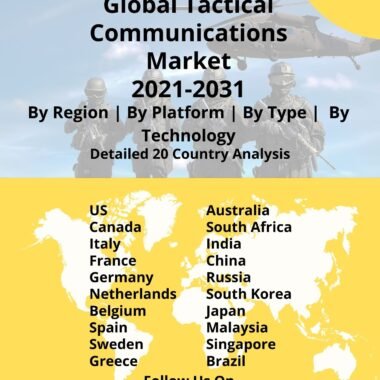Description
Critical Infrastructure Protection Market
Frequently Asked Questions of Critical Infrastructure Protection Market
Critical infrastructure protection (CIP) refers to the measures and initiatives implemented to safeguard essential assets and systems that are vital for the functioning of a society and economy. Critical infrastructure includes sectors such as energy, transportation, telecommunications, water and wastewater, healthcare, financial services, and government facilities. Protecting these infrastructures from physical and cyber threats is crucial to ensure public safety, economic stability, and national security.
The protection of critical infrastructure requires a multi-layered and multi-disciplinary approach involving physical security, cybersecurity, emergency preparedness, and collaboration among stakeholders. By implementing comprehensive protection measures, critical infrastructure can be more resilient, enabling societies to withstand and recover from potential threats and disruptions.
Protection of Critical Infrastructure Protection:
Power Grids: Protecting electrical power grids from physical attacks, natural disasters, and cyber threats is essential to ensure uninterrupted electricity supply.
Transportation Systems: Safeguarding transportation systems, including airports, seaports, railways, and highways, helps maintain smooth operations and prevents disruptions that could impact commerce and public safety.
Water and Wastewater Facilities: Securing water treatment plants and wastewater facilities is critical to maintaining the supply of clean water and preventing contamination or sabotage.
Communication Networks: Protecting telecommunications networks, including landline and mobile networks, internet service providers, and data centers, is crucial for ensuring uninterrupted communication and data transmission.
Financial Services: Securing banking systems, stock exchanges, and financial institutions is vital to safeguard economic stability and prevent financial fraud or disruption.
Healthcare Facilities: Protecting healthcare facilities, including hospitals, clinics, and research centers, is essential to ensure the continuity of medical services and safeguard public health.
Government Facilities: Safeguarding government facilities, such as defense installations, intelligence agencies, and administrative buildings, helps maintain national security and the functioning of government operations.
Major factors driving Critical Infra Protection Market Growth
Airports are under constant pressure to optimize their operations and reduce costs. Smart airports offer technologies and solutions that improve processes such as passenger check-in, security screening, baggage handling, and aircraft operations, leading to increased efficiency and productivity.
Trends influencing the Critical-Infra Protection Market Size
The steady growth in air passenger traffic worldwide is a significant driver for the smart airports market. As airports handle larger volumes of passengers, there is a growing need to adopt smart technologies and solutions to enhance operational efficiency, improve passenger experiences, and ensure seamless travel.
The integration of IoT devices allows for the monitoring and control of various systems within the airport, including lighting, temperature, and energy consumption, optimizing resource management.
By leveraging big data analytics and predictive modeling techniques, smart airports can analyze passenger flow, flight schedules, and other data to optimize operations, minimize delays, and enhance overall efficiency.
Critical-Infra Protection Market Forecast & Dynamics
The rapid advancement of technologies, such as artificial intelligence (AI), Internet of Things (IoT), big data analytics, and cloud computing, provides new opportunities for smart airport development. These technologies enable real-time data analysis, automation, and connectivity, enabling airports to improve decision-making, operational performance, and passenger services.
Airports are increasingly focusing on providing seamless and personalized experiences to passengers. Smart airports utilize technologies like self-service kiosks, mobile applications, indoor navigation, and personalized notifications to offer convenience, real-time information, and personalized services, leading to higher passenger satisfaction.
The market forecast incorporates a thorough market size and market analysis. The market analysis includes regional market size, opportunities, drivers and restraints. Country-wise market size is also included in the regional analysis.
Critical Infra Protection Market Analysis for Recent Developments
According to the General Directorate of Residency and Foreigners Affairs (GDRFA), Dubai airports welcomed 26 million travelers in the first half of 2023. The airports handled 9 million passengers efficiently, employing cutting-edge smart gates to swiftly transit through the entrance and leave procedures in seconds. This figure represents 36% of all passengers using smart gates at Dubai airports.
NTT has created a push-to-talk (PTT) application that allows airport workers to transition between private 5G and terrestrial trunked radio (TETRA) conversations. The system, developed in collaboration with Nippon Airport Radio Services (NARS), has been installed at Tokyo’s Narita International Airport. The two described it as a “move to level up integrated mission-critical comms” at airports, and they plan to replicate it with additional airport customers. NTT, represented in the transaction via local firm NTT East, will try to offer the application to other industrial environments via its international SI subsidiary as well.
Global critical infrastructure protection has evolved to address emerging threats in an interconnected and technologically advanced world. Governments, industries, and security agencies have intensified efforts to safeguard essential services such as energy, transportation, communication, and healthcare from cyber and physical threats. Advanced cybersecurity measures, including artificial intelligence and machine learning-based threat detection, are implemented to fortify critical infrastructure against evolving cyber threats. Collaborative initiatives between the public and private sectors aim to share threat intelligence and establish standardized practices to enhance resilience.
Physical security enhancements involve the integration of advanced surveillance technologies, perimeter controls, and access management systems. Autonomous drones, sensors, and smart surveillance systems contribute to real-time threat detection and rapid response capabilities. Resilience planning and redundancy strategies are prioritized to ensure continuity of critical services in the face of disruptions. Governments and organizations conduct regular risk assessments and drills to identify vulnerabilities and test response protocols. The increasing convergence of digital and physical infrastructure underscores the importance of securing not only data and networks but also the physical assets that underpin modern societies. The evolution of global critical infrastructure protection in 2023 reflects a holistic and adaptive approach to safeguarding essential services in an ever-changing threat landscape.






